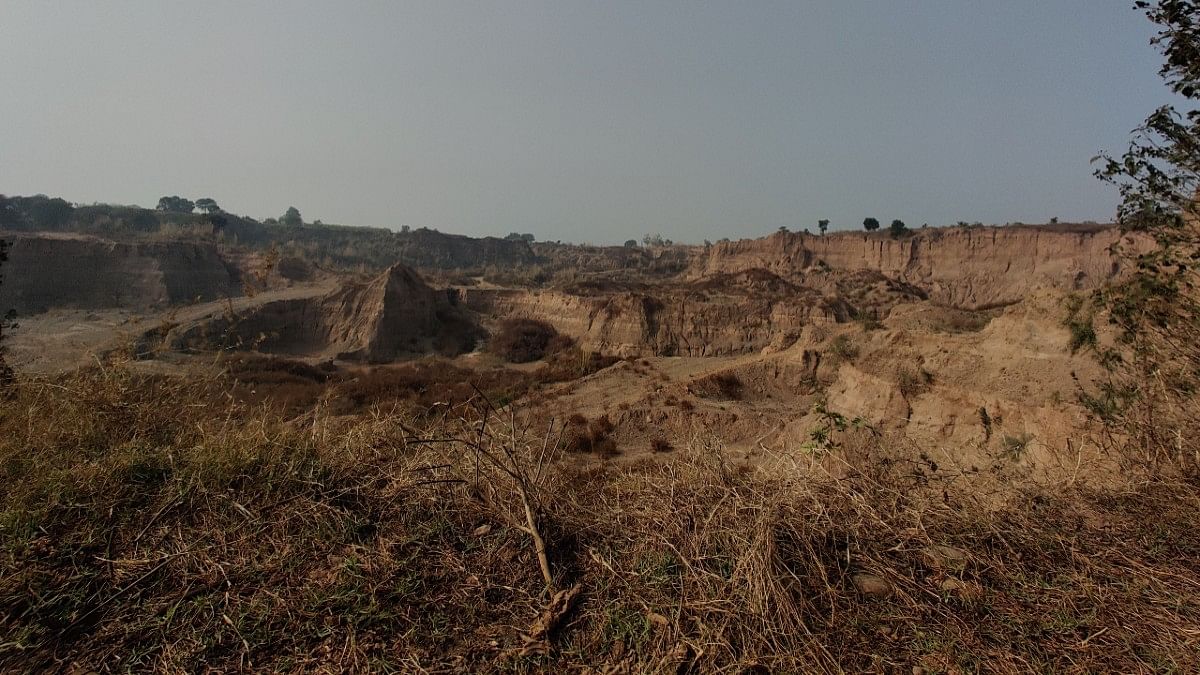New Delhi: A non-government organisation from West Bengal has launched a new portal that will give users a bird’s eye view of illegal sand-mining activities across India. Through the open-data project — India Sand Watch — which went live last week, Veditum India Foundation aims to collect, collate, annotate, and archive sand-mining data.
According to its website, Veditum India Foundation is a not-for-profit research and media organisation “working at the intersection of environmental, social, and cultural challenges”.
Illegal sand mining is the mining of sand from the riverbeds without a licence or a permit. Both legal and illegal sand mining have significant environmental impact, such as erosion of river beds which eventually cause floods.
However, although illegal sand mining is seen as a massive problem in India, there aren’t many mechanisms for large-scale tracking.
It’s here that India Sand Watch comes into play. According to founder Siddharth Agrawal, the idea for a mechanism to track sand mining came to him in 2016.
“When I was walking along the Ganga was when I first noticed sand mining at a scale I couldn’t fathom before this,” said founder Siddharth Agrawal at a virtual launch of the platform on 10 August,
He then got together with his friend Akshay Roongta from Ooloi Labs — a technology company that builds platforms for social and ecological causes — to find a solution.
“We asked ourselves ‘What if we could do this at scale—identify and map locations where sand is being mined illegally’,” he said at the launch of the platform.
According to the founders, the platform currently has 800 public documents on sand mining — 679 news reports, 123 tender documents, and 76 district survey reports.
District survey reports are undertaken to assess any mining plan in an attempt to study its environmental impact. It is undertaken by administrative officials before a mining project is green-lit.
“Our aim with the platform is to provide information that helps create a sense of accountability with regards to sand mining in the country,” said Agrawal.
But there are sceptics. Himanshu Thakkar, coordinator of the South Asian Network on Dams, Rivers and People (SANDRP) — a network working on issues related to rivers, communities and large scale water infrastructure like dams — questions the scope of India Sand Watch’s work.
“Sand mining is essentially a decentralised activity, spread across 700 districts of India. Even within a district, there are multiple actors at play,” he told ThePrint. “What is needed is a focused effort in specific areas, rather than a comprehensive approach”.
Also Read: Crater-sized quarries, bold sand mafia — why Punjab’s mining scandal is a political hot potato
User contributions, remote sensor — what platform has in pipeline
Sand is classified as a minor mineral under The Mines and Minerals (Development and Regulations) Act, 1957. According to a 2022 UN Environment Programme (UNEP) report, it also happens to be the world’s second-most exploited resource.
In India, illegal sand mining is a significant problem, with media reports frequently reporting attacks on journalists and government officials in connection with it.
According to Agrawal, India Sand Watch has been a decade in the making, born out of Veditum’s collaboration with Ooloi Labs, environmental non-profits Rainmatter Foundation and Wildlife Conservation Trust, and the California-based UC Berkeley’s Global Policy Lab.
But its founders wanted to do more than just collating information on illegal sand mining. The aim, he said, is to have India Sand Watch emerge as a tool for journalists, activists, and researchers.
“A lot of news reports led us to information about sand mining taking place, but also about how people are resisting it. We thought of how we could enable more of this information to reach the courts and the National Green Tribunal,” Agrawal said during the event, adding that reports on the website are from across the country.
The platform will soon allow users to contribute, Agrawal said, adding that they will institute a mechanism to verify such data as well as host tutorials to help users navigate the platform.
There are also other plans to expand its tracking tools, such as introducing remote sensing and satellite imagery. Besides these, the platform will also release reports “on the state of sand mining in five states in India”, Agrawal said.
Akshay Roongta, a partner in the project, called India Sand Watch an “ecosystem enabler” in the fight against illegal sand mining in India.
“This launch is just the beginning, and we invite collaborators to help us build a platform that could address questions around policy, environment, and governance in relation to sand mining,” he said at the launch.
But SANDRP’s Thakkar, quoted earlier, believes the real problem when it comes to illegal sand mining is law enforcement.
“Court documents and district survey reports are available in the public domain. The real problem is their implementation — which is something we can only achieve when the state tackles it,” he said.
(Edited by Uttara Ramaswamy)
Also Read: ‘Sand mafia, goonda tax’: Illegal mining is no secret, but still an election issue in Punjab

